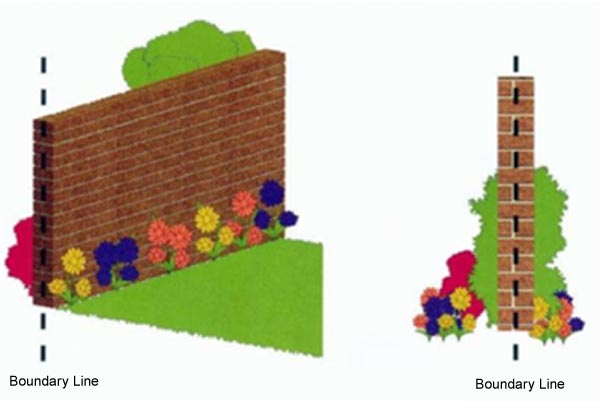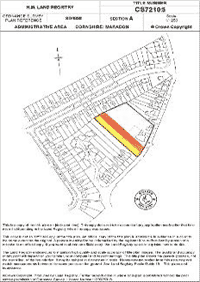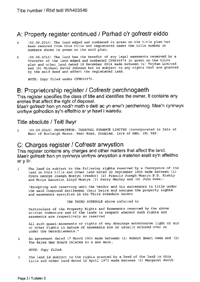Garden Boundary Walls
Contents
Article Summary
The boundary walls in a garden might be jointly owned by the neighbours, owned and maintainable by one of them only or may even be owned by one neighbour and maintainable either singly by the other neighbour, or jointly. The purpose of this article is to provide you with the information you need to ascertain ownership and maintenance liability, and discusses party wall fences.
Party Walls and Party Structures
A wall is a party wall if it is astride the boundary of land belonging to two or more different owners, and
- is part of one building, or
- separates two or more buildings, or
- is a party fence wall.
A wall is a party fence wall if it is not part of a building but is astride the boundary between two different owners and is used for the purpose of separating their land. This does not include wooden fences or vegetative barriers such as trees or hedges
Party Fence Walls
Although there are often disputes relating to boundary walls separating the actual house structures, the majority of disputes relate to garden boundary walls, which is the topic this article will focus upon. There are many physical boundaries that may be used to separate one garden from another, e.g. fences, hedges, trees, wire, and walls. This article relates only to walls.
The Party Walls Act 1996 (section 1 (1) (b) defines a Party Fence Wall as a simple wall that does not form part of a building, sitting on the land of different owners. The Act describes it as a fence wall in order to distinguish it from a wall that is part of a house. The Party Walls Act therefore governs garden walls where they sit on the land of different owners, as they are jointly owned. If the boundary wall runs from a terraced or semi-detached house to the end of or within the garden or yard, the boundary will be assumed to run along the centre of the wall, as it would in the house, unless there is rebutting evidence to the contrary. In this case the wall would be a Party Fence Wall.
Where you wish to carry out work to a Party Fence Wall, then you must serve notice on the adjoining owner in accordance with the Party Walls Act, just as you would with an interior party wall.
This following diagram shows a party fence wall typical of what may appear in a garden. It is reproduced by licence from the Department for Communities and Local Government.

Boundary Walls
A boundary wall, as opposed to a party fence wall, is a wall built entirely on the land of one ownership only. Although the wall is built upon one side of the boundary its supporting foundations are permitted by the Party Walls Act to protrude under the adjoining property.
Most disputes centre around the position of the boundary and ascertaining whether it is a shared wall or a solely owned wall; and if it is a solely owned wall, which neighbour owns it.
Boundary Search
The general way to ascertain ownership of a wall boundary, is to obtain a Boundary Search, which will provide you with a copy of all the available Land Registry documents, i.e. the Title Register, Title Plan and Associated Documents for each of the properties, and a copy of the Lease (if the property is leasehold). These documents may or may not provide conclusive evidence of ownership of the boundary wall. If they do not, then neither will they show any rebuttal evidence with regard to the legal presumptions you are otherwise entitled to make. The search also provides a comprehensive list of common law boundary presumptions. In most cases, the Boundary Search provides all the evidence you need to affirm ownership.
Boundary Wall Presumptions
1 Ownership is presumed to be on the side of the wall farthest from the garden of the owner who erected the wall, as it is presumed that the owner would make certain to build with the external face of the wall on the edge of his own land.
2 Where the wall continues outward from the boundary of a semi detached or terraced house, the Party Walls Act 1996 provides that the wall is jointly owned with the boundary running along the centre of the wall. It would be necessary to check if a Party Wall Notice had been served by one of the neighbours that may indicate something different, and also to check the Boundary Search documents for evidence to the contrary.
3 If the offence relates to the height of the wall you should check the Title Registers and Associated Documents to see if there is a Restriction on the height of garden walls.
Boundary Search 2 Properties
Obtain all the available property documents held to help resolve common boundary problems. For 2 Adjoining Properties.
£99.95Boundary Search 3 Properties
Obtain all the available property documents held to help resolve common boundary problems. For 3 Adjoining Properties.
£146.95Boundary Search 4 Properties
Obtain all the available property documents held to help resolve common boundary problems. For 4 Adjoining Properties.
£193.95


